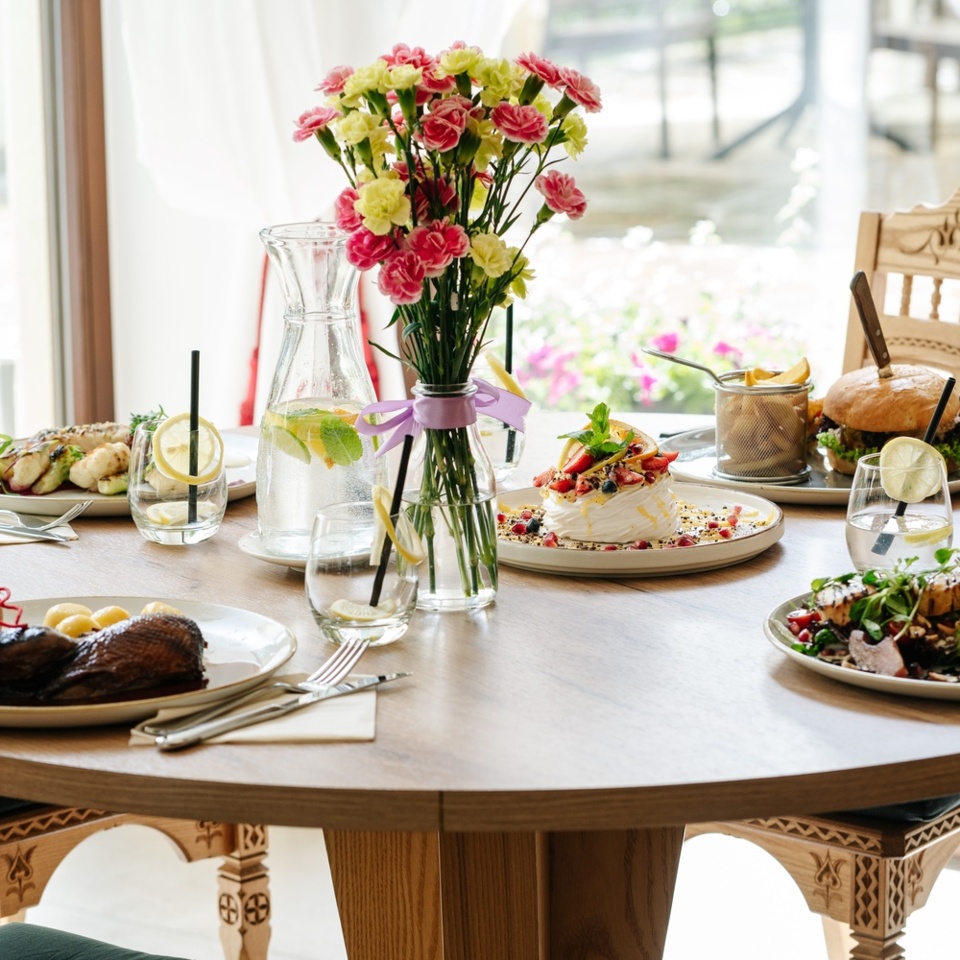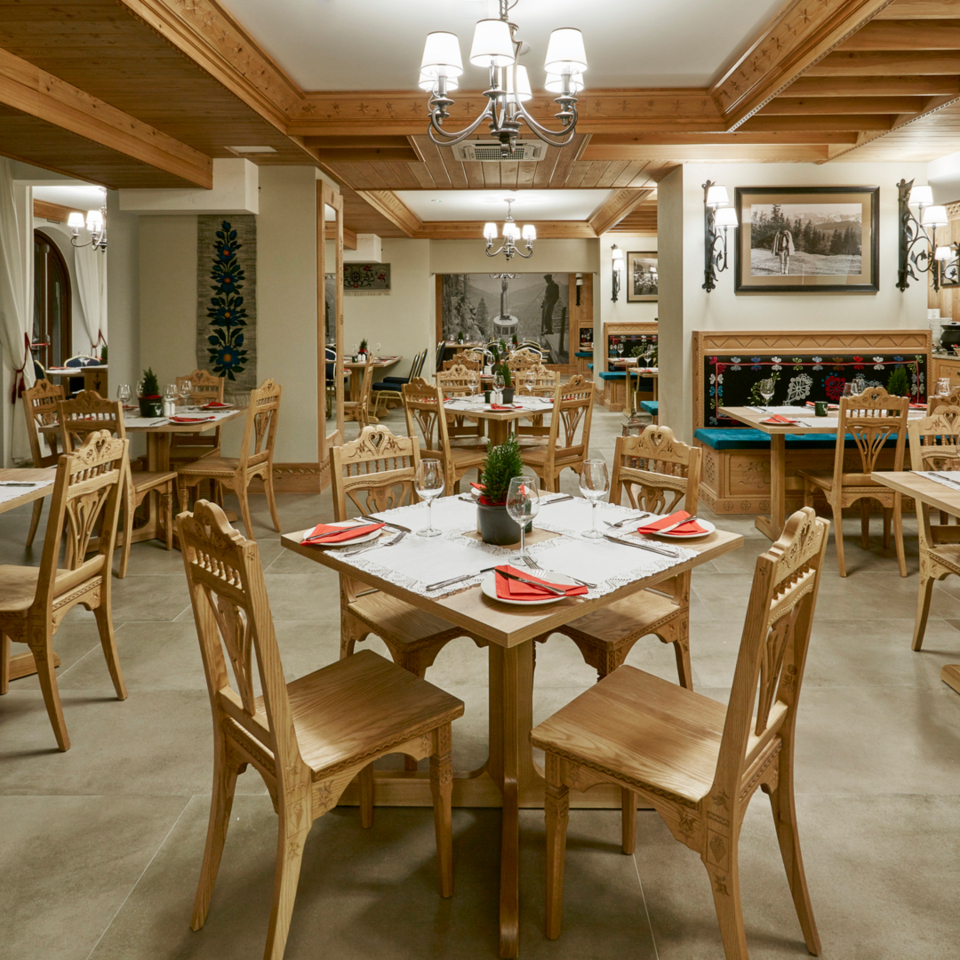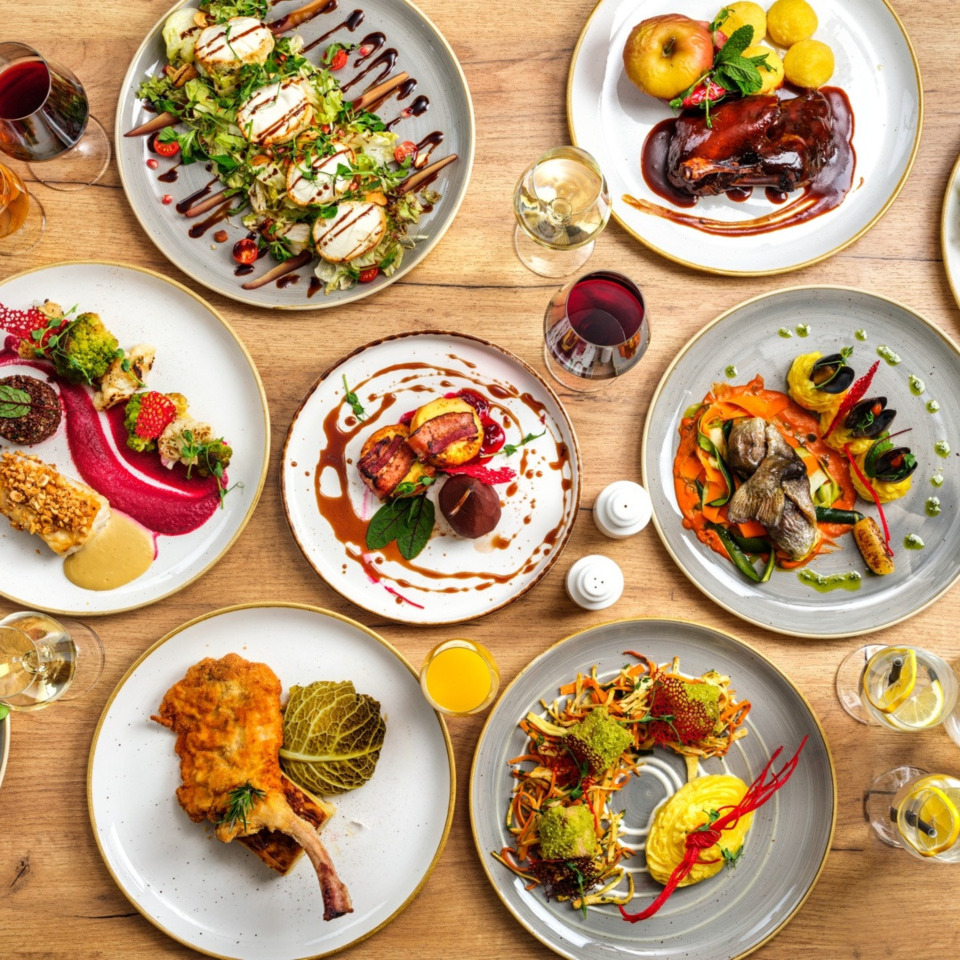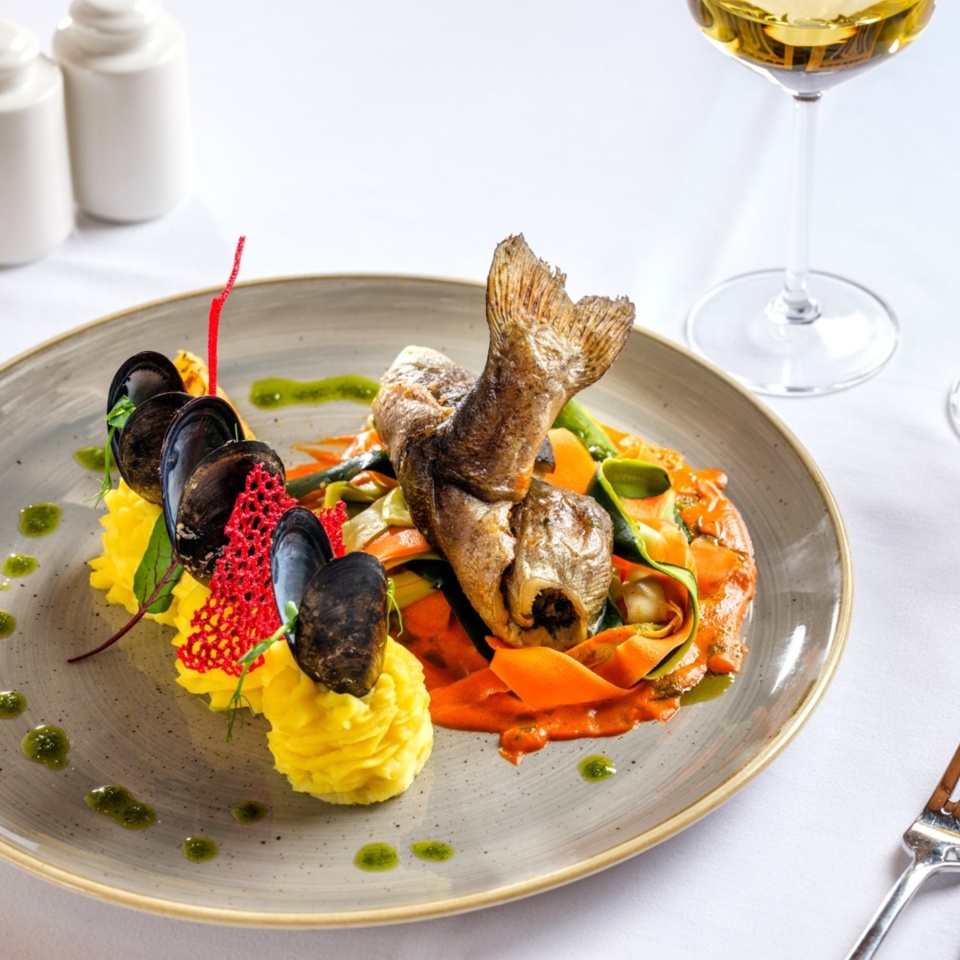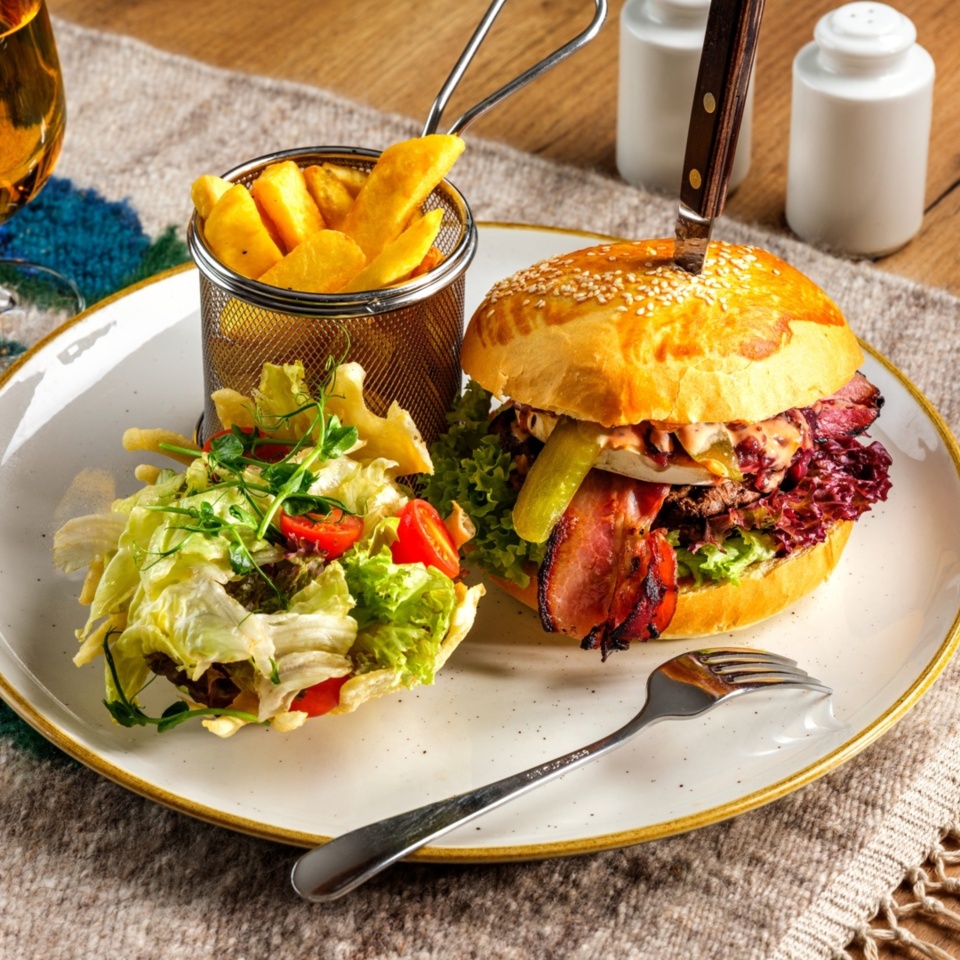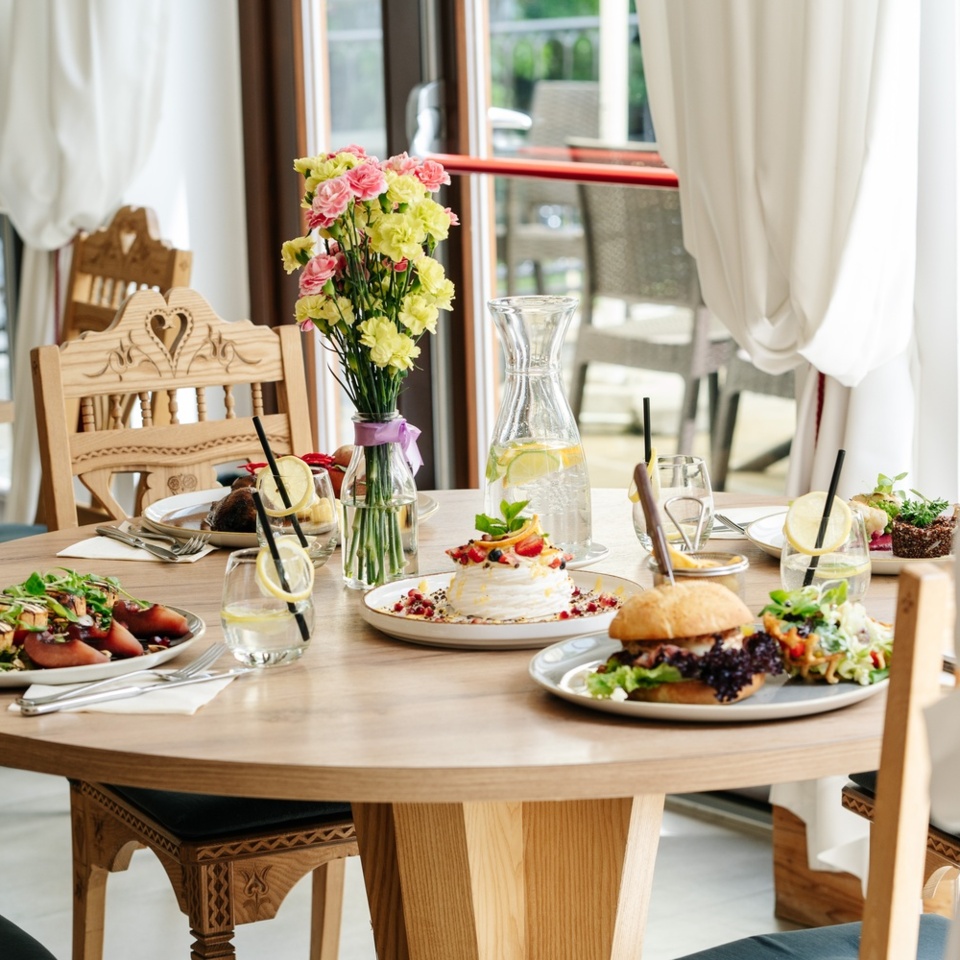Logos Hotel***
The atmosphere of ancient Zakopane didn’t die. If to look around today, to read advertisements on posters, but first of all to meet contemporary restless souls, the tradition still lasts, sometimes even in the same places. Also the famous Zakopane style didn’t disappear, although from the year 1886 over one hundred years already passed. The tradition of the Zakopane style, today still cultivated although turning up with new aspects, is still and invariably delighting.
We had it all in mind building our Hotel and handing it over at Your disposal hoping, that You will find there rest and a relaxation.

Real flavor of Zakopane
Staropolska Restaurant
Our Restaurant is situated in the heart of Zakopane. This is a perfect place for breakfast, lunch or romantic dinner in Zakopane. Our specialty is polish cuisine, which combines tradition and modernity
Conference rooms
Conferences and training
In the LOGOS Hotel we organize conferences, trainings, meetings, cocktails, vernissages and banquets.
Relax your body and mind
SPA zone
Everyone that needs relax is invited to our SPA zone. We offer a lee situated far away from the hustle and bustle of our modern world, a place, where the harmony of body and soul awakes.

Hotel Logos Zakopane centrum miasta
Hotel Logos Zakopane – komfort w zielonym sercu miasta
Szukasz wyjątkowego miejsca na wypoczynek w Tatrach? Hotel Logos*** to elegancki i przytulny hotel w centrum Zakopanego, położony w zielonej, spokojnej okolicy, tuż obok malowniczego parku miejskiego im. Marszałka Józefa Piłsudskiego. Odległość od tętniących życiem Krupówek to zaledwie kilka minut spacerem – dzięki temu nasi Goście mają wszędzie blisko, a jednocześnie mogą cieszyć się ciszą i relaksem z dala od miejskiego zgiełku.Hotel Logos to miejsce, które łączy góralski klimat z nowoczesnym standardem. Nasz wysoko oceniany obiekt od lat cieszy się uznaniem zarówno wśród turystów indywidualnych, jak i grup zorganizowanych oraz klientów biznesowych. To idealny wybór na rodzinny urlop, romantyczny weekend we dwoje, a także konferencje i spotkania firmowe w Zakopanem.
Komfortowe pokoje i wyjątkowa lokalizacja
Do dyspozycji naszych Gości oddajemy komfortowe, przestronne pokoje – w większości z balkonami i widokiem na Tatry. Każde wnętrze zostało zaprojektowane z myślą o wygodzie i relaksie. Wnętrza łączą nowoczesność z elementami regionalnymi, co tworzy ciepłą i przyjazną atmosferę.Nasza lokalizacja to prawdziwy atut – hotel mieści się w zacisznym miejscu, blisko Krupówek, w sąsiedztwie terenów zielonych i pieszych ścieżek. Idealna baza wypadowa na szlaki, stoki narciarskie i wszystkie największe atrakcje Zakopanego.
Restauracja, SPA i więcej
Na miejscu czeka na Ciebie Restauracja Staropolska, znana z wysokiej jakości i doskonałych opinii Gości. Serwujemy tradycyjne dania kuchni polskiej i regionalnej w nowoczesnym wydaniu .Dla osób poszukujących relaksu przygotowaliśmy strefę SPA z sauną i jacuzzi. To doskonałe miejsce, by odpocząć po dniu pełnym wrażeń.
Konferencje i pobyty grupowe w Zakopanem
Hotel Logos to także jedno z najlepszych miejsc do organizacji konferencji w Zakopanem. Oferujemy nowoczesne sale konferencyjne dla nawet 300 osób, kompleksowe zaplecze techniczne oraz doskonały catering z naszej restauracji. Bliskość centrum miasta i piękne widoki sprawiają, że każde spotkanie zyskuje wyjątkową oprawę.
Zapraszamy do Hotelu Logos
Zarezerwuj swój pobyt i przekonaj się, dlaczego tak wielu Gości wraca do nas każdego roku. Hotel Logos w Zakopanem to miejsce, które łączy wszystko, czego szukasz – doskonałą lokalizację, komfortowe warunki i przyjazną atmosferę. Gdy Tatry, Zakopane i relaks spotykają się w jednym miejscu – wiesz, że jesteś w dobrych rękach.















